
Internal Knowledge Base: What it Is and How to Create one
- September 2, 2024
- 13 Min read
Eventually, every company struggles with organizing its data and information in one place. This place should be systematic, reachable, easy to use, and have a clear structure. To achieve these goals, many companies adopt internal knowledge bases.
What is an Internal Knowledge Base & Why Would You Need It?
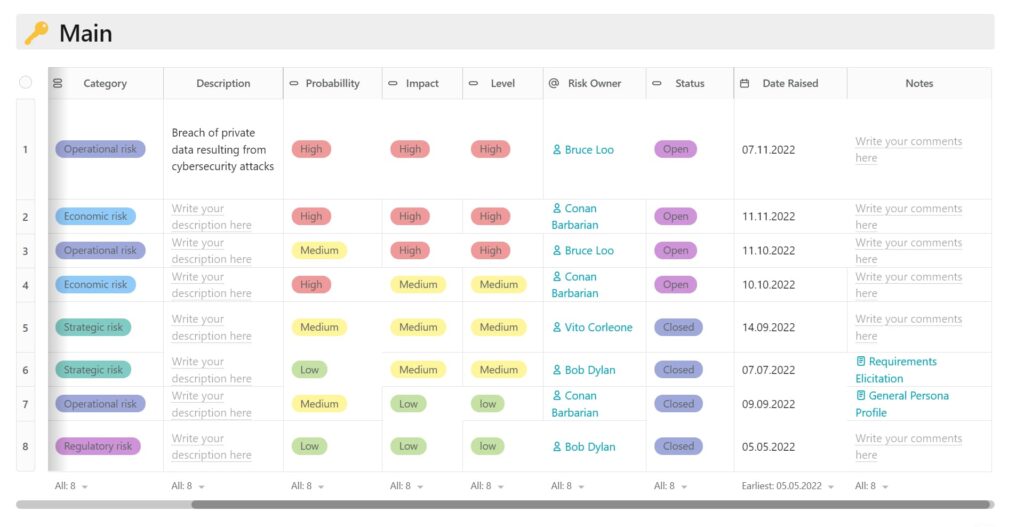
An IKB, or internal knowledge base, is a database only employees and other authorized users can access. The goal is to have everything an institution knows and does in one place so everyone can access and use it.
In other words, it’s like a company-wide Wiki or customer portal, but for staff. However, a knowledge base is distinguished by two key characteristics:
- They are meant just for usage inside the company by its employees.
- Due to the sensitive nature of the data they store, internal knowledge bases must be protected by stringent access and authorization policies.
Thanks to the internal knowledge base software’s versatile access control tools, you can restrict which workers have access to which documents and keep sensitive information from falling into the wrong hands. Data about employees, such as salaries and performance reviews, may be shielded from view by anybody outside the human resources department. The CEO’s most recent quarterly report is available to all employees. The LinkedIn article says, “Internal Knowledge Base acts as a center of all the knowledge that the team members have collected while they were in the team or the organization. The knowledge base allows team members to collect, organize, access, collaborate, and distribute their knowledge and information internally.”
So why would you want to build an internal knowledge base?
There are several scenarios where an organization may benefit from having its repository of information:
1. Development
Because of the organization’s size or complexity, knowledge and best practices have dispersed. About 20% of an employee’s time is spent looking for resources inside the company or for coworkers who may assist.
2. Teamwork
Informational obstacles inhibit cooperation between different teams or departments that need to work together.

3. Education and induction
Learning and development programs may be fully optimized, or training modules may be dispersed across roles and divisions.
4. Consistency
There needs to be more standardization in procedures, and best practices are often disregarded.
The Benefits of an Internal Knowledge Base
1. Problems are solved in less time
Being placed on hold is everyone’s least favorite phone experience. More so when “just a second” stretches into many excruciating minutes while an agent searches for a solution. Now, picture the same agent having internal access to a knowledge base where frequently asked questions (FAQs) have already been answered and verified as accurate. When workers who interact with customers have to wait for data, the delay is communicated to the consumer, who becomes more frustrated as the waiting time increases. One of the finest methods to boost productivity and crank out solutions faster is to get rid of waiting around.
2. Reduced time required for enrollment
As helpful as an internal knowledge base is for customers, it may be an even more valuable asset to your staff. Everyone has felt like they were at square one when they first started at a new firm. A knowledge base is a present that continues giving long beyond the first day of work.
Do not waste time guessing at answers that already exist. Whether they need to know about employee benefits or holiday schedules, your staff can quickly get the information they need and get back to what matters: their job.
3. Reduced levels of dissatisfaction among workers
Frustration follows confusion, which in turn hinders productivity. Workers who are made to waste time going in circles to get what they need to do their jobs are more likely to grow unhappy and act rudely toward consumers.
An internal knowledge base streamlines finding solutions to issues, benefiting employees and clients. Although it does take some effort to keep an accurate knowledge base structured and accessible, the time and frustration saved by having a clear pathway for problem-solving more than compensate for the time and effort required to keep it that way.
4. Facilitated HR workload reduction
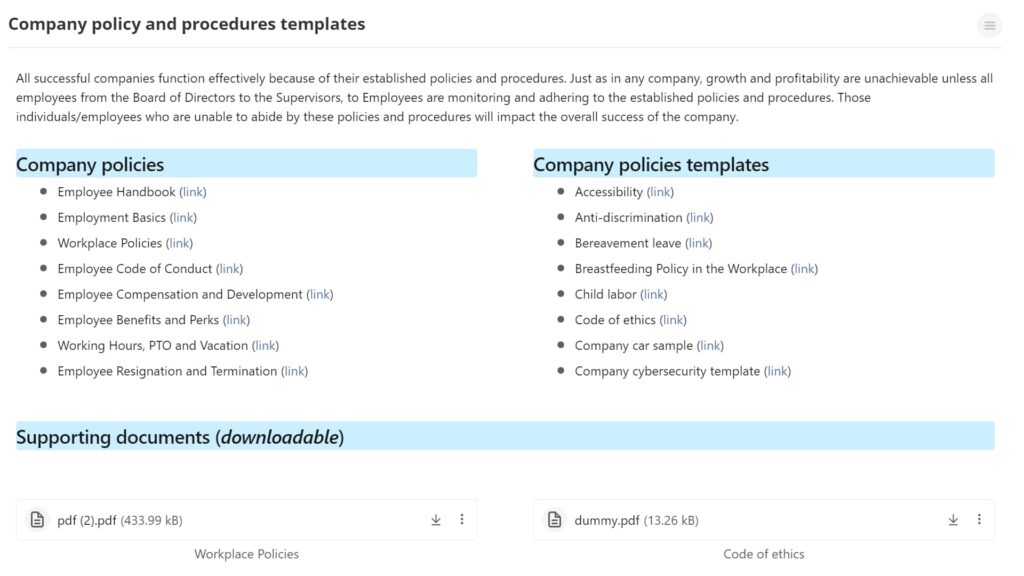
Internal knowledge base software may store sensitive information about your work and bolster your current customer service abilities. Your company’s internal knowledge base may safely store all the confidential information you need, such as policies and payroll, eliminating the need to contact the HR department. That means less work for your HR department and less time lost as workers search for them.
5. Better data precision and consistency
Ad hoc methods of disseminating company news, in which each worker uses “their system,” are inefficient. It’s hard to keep that internal base up to date with the most current and correct information due to problems like duplicated effort and lost details. Here, you can find valuable tips on being more efficient.
If you have an internal knowledge base, you can be confident that knowledgeable employees have reviewed the content, and it is only available to the teams and individuals who have been granted access. You may be sure that the data you’re using has been checked for accuracy and can be relied upon because of this. It would be terrible to have to deal with a customer service issue by using an old-fashioned internal base you picked up from some former employee.
6. Increased happiness among customers
The client is the most critical variable in every business. Your consumers may never see the contents of your internal knowledge base, but they will undoubtedly benefit from it. Using a knowledge base, customer care personnel may respond more efficiently to inquiries, fix issues, and connect with customers in a kind and helpful manner.
The information in an internal knowledge base helps your agents provide clients with what they want—a speedy answer to their issues, whether they are providing real-time phone assistance or responding to a support request.
What Should be Included in the Internal Knowledge Base?
Though each organization can create its own, most utilize internal knowledge bases to document the information their workers need to accomplish their tasks effectively.
- Office locations, stock ticker symbols, media contacts, and company websites are all included.
- This is information about benefits, including what’s on offer, when you can enroll, and other relevant details.
- New hire orientation: how things function, what kind of equipment they’ll be given, and who to ask questions.
- Full-service and self-service options for technical support. Tech know-how, fundamentals of device safety.
- Any organization must have a transparent chain of command, articulate escalation policies, and determine the proper placement of teams.
- Payment – Details about the annual review process, including how to get pay stubs and tax paperwork.
- Planners—The Dates and times for the firm’s meetings, events, and holidays. Special collaboration software, such as FuseBase, can also help disseminate such information among team members.
- Analysis of the market: articles from outside sources, competitive pricing, and more.
- Insider knowledge – New (or altered) procedures, alternatives, and business announcements.
To facilitate smooth information exchange throughout organizations, recording data internally at the team level is also important. Customer service representatives, for instance, will require access to external frequently asked questions and customer usage data, while account management may require usage and finance data, and engineering will require anonymized usage data but access to engineering-specific tools and information that require their documentation.
In light of these varying demands, businesses must implement a knowledge management strategy from the top down while delegating day-to-day tasks like content development and maintenance to employees lower in the organizational structure.
Creating an Internal Knowledge Base
1. It’s essential to recognize where and what the queries are. Conducting an internal audit is the first step in closing the information gap that may prevent your staff from performing at peak efficiency. Consider employees’ time in the onboarding and training phases, contact center wait times, and HR issues. To respond appropriately to questions, you need to know where most inquiries come from.
2. You should investigate your choices. While many internal knowledge base software products are available, not every platform will suit your company’s needs. Look at things like customer feedback, cost, and scalability. Write down the features you need, any suggestions from business partners, and any financial constraints that may restrict your choices.
3. Plan your moves strategically. The next step is to compare the finest internal knowledge base software choices with the requirements you identified in Step 1. Consider your top priorities, and then construct a list of the software features and functionalities you think will be most helpful in meeting those objectives. Integration should be a primary consideration. Ensure your tool can interface with your CRM or end-to-end customer support platform for maximum efficiency.
4. Fourth, decide on an internal base to store information about your company. After weighing your options and setting priorities, it’s time to take the plunge. It’s best to ease into new software when possible by taking advantage of any available trial periods. It’s a great approach to ensure the program you’ve settled on will suit your needs. You know you’ve discovered the right platform if it’s easy to implement.
5. Expand your horizons by acquiring new information and continuing to do so. Construction may begin after settling on a platform and getting it up and running. Since not all employees need access to all firm data, this will include establishing user permissions. Also included is importing all of your company’s data from its present storage locations, including individual brains. The finest knowledge base software will streamline the internal process of creating and organizing your knowledge base; you may even find yourself drawing on the provider’s knowledge base.
EXPERTS SAY:
“Here’s my 3 secrets of creating a knowledge base for the team members:
- Go cloud – Not everybody can be in the same place at the same time; this requires the information/workflow to be digitized and easily accessible.
- Share your tips – By having team members unavailable unpredictably, the company/clients can suffer on a fluctuant deliverable. By sharing tips between team members, you ensure the quality and integrity of your product to the client.
- Be human – Not everything that is part of the “knowledge base” is written; recognize that many processes require a personal flair: share it openly, help your team member grow, cherish YOU as a contributor to their growth, elemental to a tighter company spirit.“

How to Structure an Internal Knowledge Base
1. Begin by formulating your knowledge base/knowledge management approach
To help you get started, here are some questions to ponder:
- How can your internal knowledge base contribute to a more comprehensive knowledge management strategy?
- With your software, how exactly do you plan on addressing such problems?
- Who will be in charge of managing and contributing to your organization’s internal knowledge base?
2. Form an internal knowledge base group
It may seem reasonable to solicit input from all team members, but it is preferable to appoint one or more individuals to lay the groundwork for your internal knowledge base. Having a more precise picture can help you organize everything in a manner that makes sense for your company.
Some topics to consider:
- Who exactly will be on our internal knowledge base squad?
- Who exactly is helping out here?
- Who are the editors here?
- Whose responsibility is it to ensure that the resources are current?
3. Develop a strategy for execution
Internal knowledge bases are expensive investments that may easily be squandered if the first barrier to switching to a new system isn’t overcome. Instead, you should prepare for the tool’s rollout to ensure success.
- Seek out workers’ input on the proposed arrangement.
- Plan how you’ll get workers involved in the co-creation process. Can we expect input from everyone?
- Set up a time to do a virtual walkthrough through video chat and screen sharing.
- Produce tutorial videos introducing the internal knowledge base through screen sharing and demonstrating its usage.
4. Establish a content organizing structure that’s easy to use
You still need to arrange material that works for your team, regardless of how user-friendly the interface of the internal knowledge base is or how effective the search feature may be.
You should consider the design of the homepage or dashboard. Which types should everyone be aware of, and why are they crucial?
To what extent are preexisting categories sufficient for the content organization? Maybe one for each team or undertaking?
5. Collect documents for the company’s internal knowledge base
Over time, your knowledge base will increase, but you should also establish a basis with critical internal papers. To what will you contribute? Writing articles or papers that cover common concerns and subjects for each department is a bright place to start. Add a frequently asked questions section.
Get ideas for what to write about from staff; what information should be included in the company’s internal knowledge base? Contribute your suggestions for future articles to a shared doc.
6. Identify the best practices for content creation in the internal knowledge base
In the preceding phase, you likely accumulated a wide variety of papers and files. For example, annual and sales reports are records that should remain mostly unchanged from year to year. Standards will be helpful for the articles you create, manage, and work on together. In your articles, remind team members to maintain brand consistency. You might adopt an offbeat, humorous, or straightforward tone depending on your target market. “A strong and emerging knowledge base can help internal and external customers, drive revenue and reduce costs,” says the Forbes article.
You can assign internal knowledge base experts or knowledgeable coworkers to update the collected articles to meet the new criteria.
7. Add the necessary materials
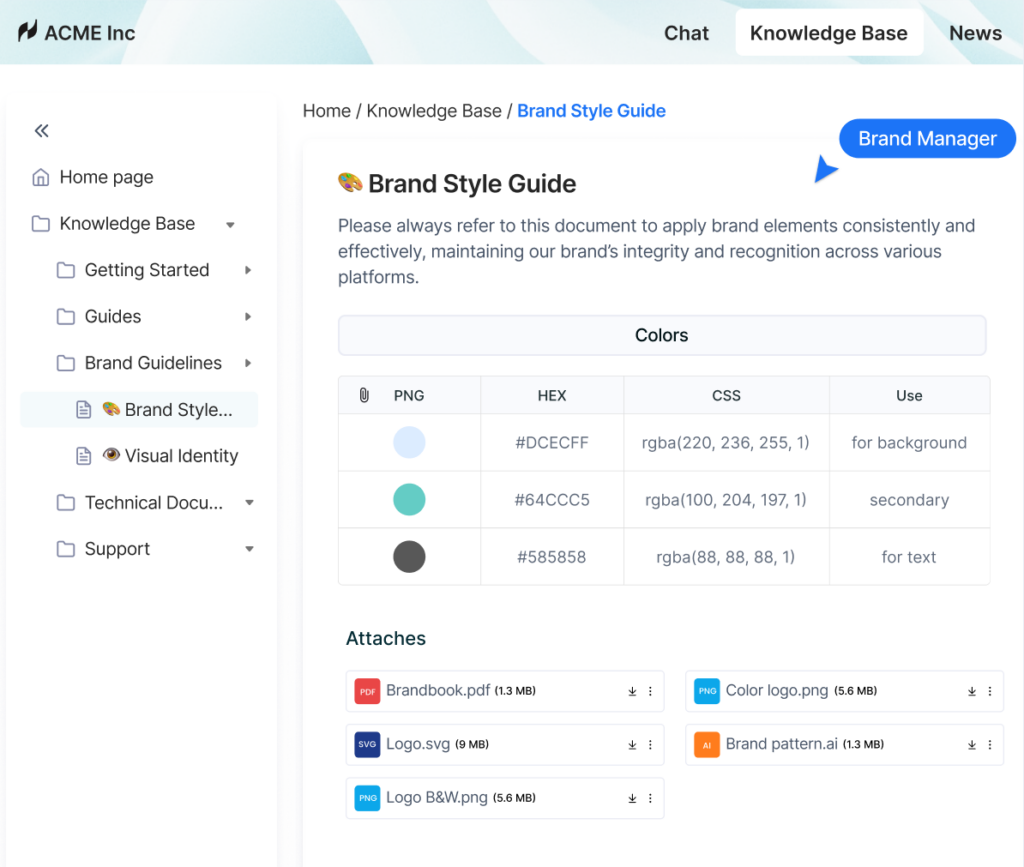
Perhaps you’ve worked together in the past to improve the brand style guides for the internal knowledge base. Don’t forget to submit your materials if you haven’t already! As shown above, with the FuseBase tool, it is critical for the internal knowledge base to have the ability to file your brand assets appropriately.
8. Define permissions and access controls
Let’s call in the remainder of the staff at this organization now. Establish who can see what. Giving all users access to most features while protecting the most critical data is a simple method of managing user access on a large scale.
9. Put out a call for user input
The internal knowledge base will benefit significantly from having an article collection contributed by staff once they have access to it. Start by having everyone add something they want to see in the internal knowledge base. As a result, they will have experience with the tool, and it will be easier the next time they want to contribute material.
10. Plan frequent upkeep
Information becomes outdated regardless of how efficient the internal knowledge base tool is. As a result, it’s important to keep returning to the material and making adjustments as needed. For instance, you’ll want to revise the quarterly sales data every three months. Someone who isn’t designated to handle updates can slip between the gaps.
Ways You Can Optimize Your Internal Knowledge Base
Building an internal knowledge base involves trial and error as you learn what works and what doesn’t. Users’ input is crucial for refining an internal knowledge base. Regularly poll your staff to get honest feedback on how well the system meets their needs and where it’s falling short. Then, you may use that criticism to gradually increase your internal information store.
Additionally, analytics may be monitored to provide information on the efficiency of an internal knowledge base. If customer service wait times remain as long as they were before implementation, more planning and optimization may be required within the customer service department to shorten wait times.
Including information from various channels is another effective strategy for improving your internal knowledge base. Sometimes, a visual demonstration is more effective than textual instructions.
How to Choose the Best Internal Knowledge Base Software
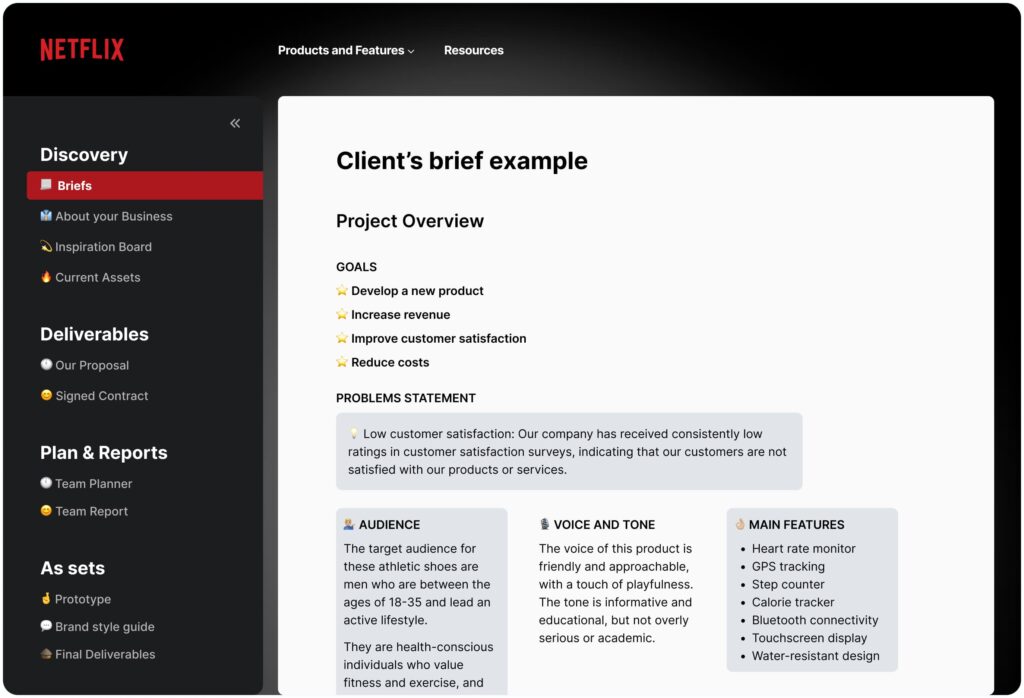
There are several options available in most internal knowledge bases. You should give some thought to the following, among the most crucial questions:
- User-friendly dashboard. Is it easy to use, and does it seem nice?
- Transfer of files. Do you want to scan documents immediately into the database or upload their bulk?
- Authoring content. Are there helpful tools for teamwork and communication, such as discussion threads, polls, and live revisions and saves?
- Controlled access. Can they go into that? Is it possible to set individual, team, and public permissions for accessing and modifying the content?
- Capacity to search. Is there a good way to search the internal knowledge base? To what extent is picture material searchable?
- Integrations. What additional programs or technologies do you require integration with for a simple workflow?
- Analytics. Will you have internal metrics to track how often workers use the knowledge base?
- Assistance with languages. Can you provide information in several tongues?
- Safety measures. What specific forms of encryption, such as SSL and two-factor authentication, are required?
After considering the above-mentioned facts, you can choose an internal knowledge base that would be a perfect pitch for your company. If you still have doubts, there is another solution. A professional collaborative tool can be a great alternative to a massive internal knowledge base.
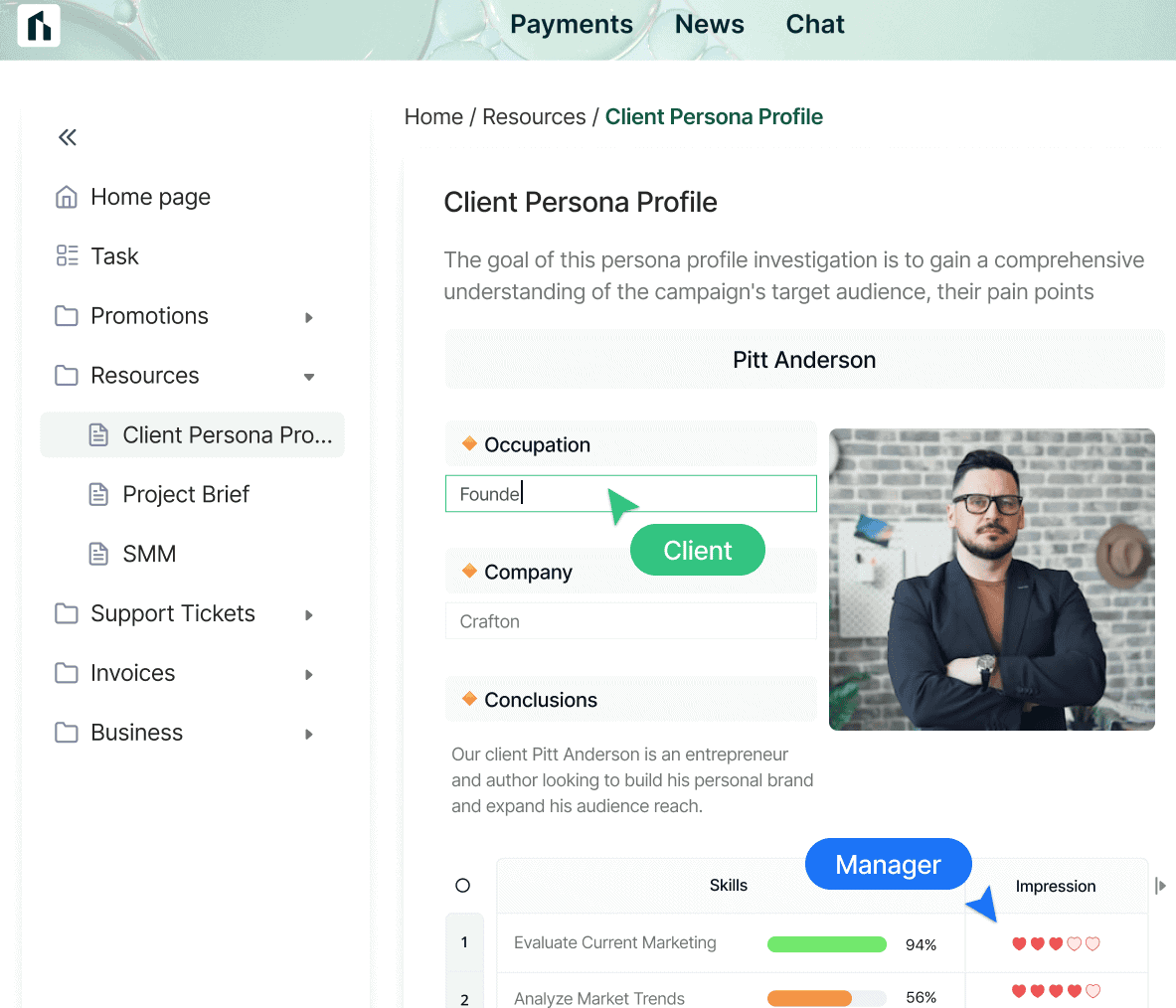
Such software as FuseBase can become everything you are looking for. With FuseBase, it is easy to create online notes, docs, and wikis and customize them to meet your needs. Make lists and assignments, structure your data in the tailor-made view and share them with your teams or clients via FuseBase Portal.
Structure the company’s internal knowledge base with FuseBase!
Any decision you make is proper if the program you’ve chosen meets the urgent needs of your company.
Conclusion
We have covered some of the most essential internal criteria while vetting potential knowledge bases for your company.
While every one of them has potential value, there is one that is often forgotten about that might lead to significant expenditures after the fact. Here, individualization is the topic at hand. Because no matter how helpful a product is out of the box, it still has to be customized to your company’s specifications.
Before committing to it as the foundation of your company’s internal knowledge base, you should consider how flexible the technology is. Is it flexible enough to meet your current company’s requirements? Will it be scalable to accommodate future requirements?
We hope this article will help you answer these and other questions about the internal knowledge base and make your final choice.
Learn how FuseBse can help you with building up your perfect knowledge base.
Found it useful? Share the article with your community
Subscribe to our blog!
Get weekly tips and insights on how to grow your business